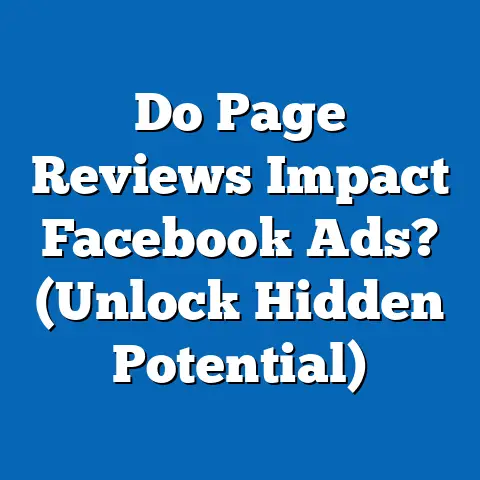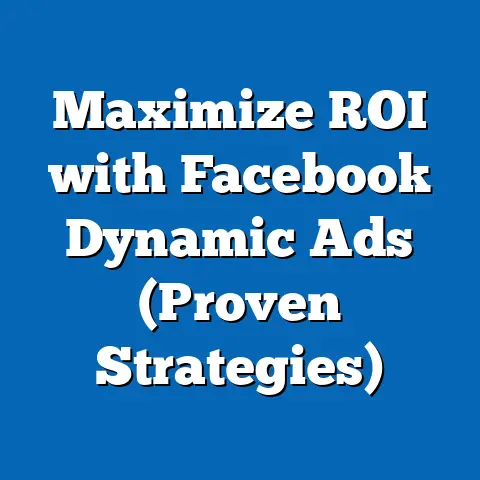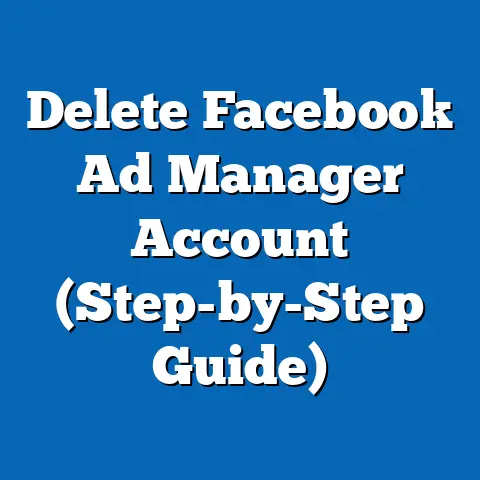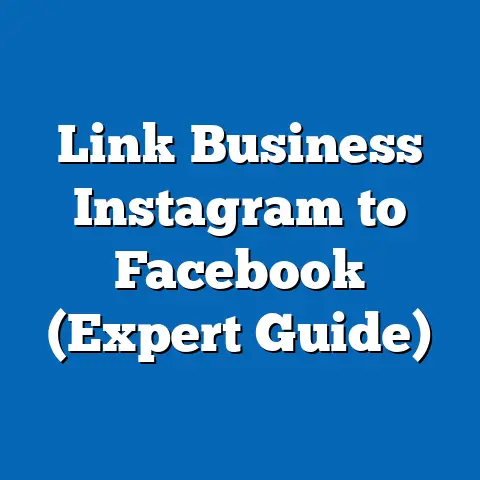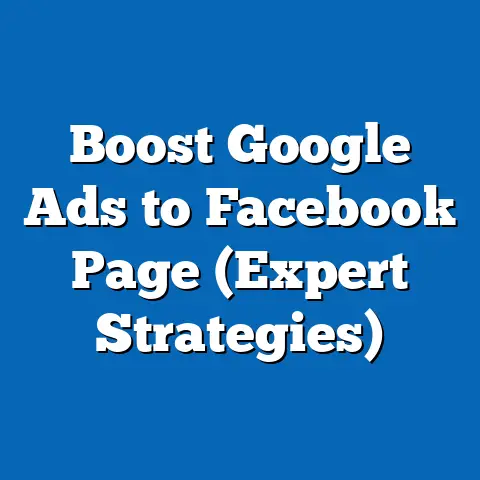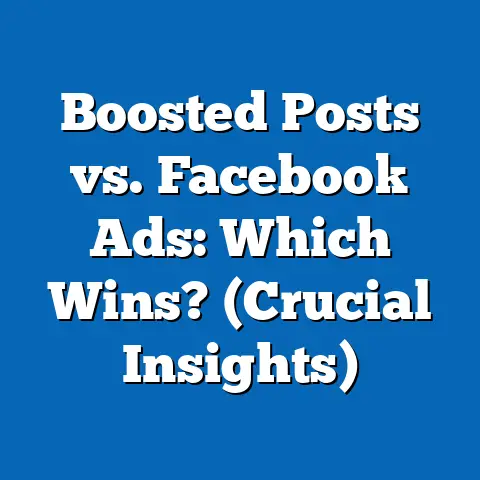Unlock Profits: Facebook Ads Without a Page (Game-Changer)
I remember the day I almost gave up on Facebook advertising. It wasn’t the platform itself, but the seemingly mandatory requirement of having a Facebook Page that felt like a huge hurdle. I was a solopreneur, juggling a million tasks, and the thought of constantly churning out content just to maintain a “respectable” Facebook presence felt… suffocating. Honestly, it felt like I was spending more time trying to look successful than actually being successful.
I vividly recall one specific evening, hunched over my laptop, desperately trying to craft an engaging post about the benefits of my online course. My mind was blank, my creative well completely dry. I thought to myself, “There has to be a better way! I just want to reach the people who need this course, not become a social media celebrity.”
That frustration, that moment of near-defeat, actually sparked a pivotal shift in my advertising strategy. It led me down a rabbit hole of research, testing, and ultimately, the discovery that you can run Facebook Ads without a Facebook Page. A revelation that felt like finding a secret passage to advertising success. It was a mix of excitement and skepticism. Could it really be this simple? The answer, as I soon found out, was a resounding yes. And it completely changed the game for my business.
Understanding the Traditional Approach to Facebook Ads
For years, the conventional wisdom surrounding Facebook advertising was simple: you need a Facebook Page. This Page served as your digital storefront, a place to showcase your brand, build a community, and, most importantly, run your ads. The logic was sound, at least on the surface. Your Page provided a destination for people who clicked on your ads, allowing them to learn more about your business and engage with your content.
However, this approach comes with its own set of challenges, particularly for small business owners, startups, and solopreneurs like I was. The need for a well-established Page often feels like a significant barrier to entry. Think about it:
- Constant Content Creation: Maintaining an active Facebook Page requires a steady stream of engaging content. This can be time-consuming and resource-intensive, especially when you’re already wearing multiple hats.
- Building a Community: Simply having a Page isn’t enough. You need to actively engage with your audience, respond to comments, and foster a sense of community. This requires consistent effort and a dedicated social media strategy.
- The Fear of Not Having a Strong Online Presence: Many new advertisers worry about their Page looking empty or unprofessional. This fear can lead to procrastination and ultimately prevent them from even starting to advertise.
I’ve talked to so many business owners who’ve admitted to being intimidated by the idea of creating content. They’re experts in their field, but feel like they’re not “social media savvy” enough. This is a real problem! It deters countless potential advertisers from tapping into the immense power of Facebook’s targeting capabilities.
Takeaway: The traditional approach to Facebook advertising can be daunting, especially for those who lack the time, resources, or expertise to manage a Facebook Page effectively.
The Game-Changer – Facebook Ads Without a Page
Now, let’s talk about the game-changer: running Facebook Ads without a Facebook Page. Yes, you read that right. It’s no longer a mandatory requirement. Facebook allows you to create and run certain types of ads without linking them to a Page.
So, how does this magic trick work? Essentially, you’re leveraging Facebook’s ad platform to directly promote your website, product, or service, bypassing the need for a public-facing Page. Instead of sending users to a Facebook Page after they click on your ad, you can direct them straight to your landing page, contact form, or even a Messenger conversation.
The key here is understanding which types of ads are compatible with this approach. Here are a few examples:
- Lead Ads: These ads are designed to collect leads directly on Facebook. Users can fill out a form without ever leaving the platform, making it incredibly convenient and increasing conversion rates.
- Traffic Ads: If your primary goal is to drive traffic to your website, you can create traffic ads that send users directly to your landing pages.
- Conversion Ads: These ads are optimized for specific actions on your website, such as purchases, sign-ups, or downloads. By tracking conversions, you can measure the effectiveness of your ads and optimize your campaigns accordingly.
- Messenger Ads: Want to engage directly with potential customers? Messenger Ads allow you to start a conversation with users who click on your ad. This can be a powerful way to answer questions, provide personalized recommendations, and close sales.
I found this approach to be incredibly liberating. It allowed me to focus on what truly mattered: creating compelling ads, targeting the right audience, and driving conversions. I didn’t have to worry about constantly creating content for a Facebook Page or trying to build a community from scratch.
The advantages of running Facebook Ads without a Page are numerous:
- Reduced Overhead: No need to spend time and resources managing a Facebook Page.
- Lower Time Investment: Focus on creating effective ads and optimizing your campaigns, rather than constantly churning out content.
- Increased Efficiency: Drive traffic and conversions directly to your desired destination, bypassing the need for users to navigate through a Facebook Page.
- Flexibility: This approach is particularly well-suited for businesses with a strong online presence outside of Facebook or those who simply want to focus on direct response advertising.
Takeaway: Running Facebook Ads without a Page offers a streamlined, efficient, and flexible way to advertise on the platform, allowing you to focus on what truly matters: driving results.
Step-by-Step Guide to Running Ads Without a Page
Okay, now let’s get down to the nitty-gritty. How do you actually set up Facebook Ads without a Page? Here’s a detailed, step-by-step guide to get you started:
- Create an Ads Manager Account: If you don’t already have one, head over to Facebook Ads Manager (https://www.facebook.com/adsmanager) and create an account. You’ll need a personal Facebook account to do this, but don’t worry, your personal information won’t be displayed in your ads.
- Set Up a Business Manager Account (Optional but Recommended): While not strictly required, I highly recommend setting up a Business Manager account (https://business.facebook.com/). This allows you to manage multiple ad accounts, Pages (if you ever decide to create one), and other business assets in one place. It also provides enhanced security and access control.
- Choose the Right Campaign Objective: In Ads Manager, click on the “Create” button to start a new campaign. You’ll be prompted to choose a campaign objective. Select an objective that aligns with your advertising goals, such as “Leads,” “Traffic,” “Conversions,” or “Messages.”
- Target the Right Audience: This is arguably the most crucial step. Facebook’s targeting capabilities are incredibly powerful, allowing you to reach specific demographics, interests, and behaviors. Take the time to carefully define your target audience. Consider factors like age, gender, location, interests, education, and job title. You can also create custom audiences based on your existing customer data or website visitors.
- Design Creative Elements: Your ad copy, images, and videos are what will grab people’s attention and entice them to click. Make sure your creative elements are visually appealing, relevant to your target audience, and clearly communicate your value proposition. Use strong headlines, compelling visuals, and a clear call to action.
- Budgeting and Bidding Strategies: Determine your budget and bidding strategy. You can set a daily or lifetime budget for your campaign. As for bidding, you can choose between automatic bidding (where Facebook optimizes your bids for the best results) or manual bidding (where you set your own bids). I recommend starting with automatic bidding and then experimenting with manual bidding once you have a better understanding of how the platform works.
- Ad Placement: Select where you want your ads to appear. Facebook offers a variety of ad placements, including Facebook News Feed, Instagram Feed, Audience Network, and Messenger. You can choose to let Facebook automatically optimize your ad placements or manually select the placements that you think will perform best.
- Track and Optimize: Once your campaign is live, it’s crucial to track your results and make adjustments as needed. Monitor metrics like impressions, clicks, conversion rates, and cost per acquisition. Use this data to identify what’s working and what’s not, and then optimize your targeting, creative elements, and bidding strategies accordingly.
Pro Tip: A/B testing is your best friend. Experiment with different ad copy, visuals, and targeting options to see what resonates best with your audience.
Takeaway: Setting up Facebook Ads without a Page is a straightforward process that involves creating an Ads Manager account, choosing the right campaign objective, targeting the right audience, designing compelling creative elements, and tracking your results.
Real-Life Examples and Case Studies
Let’s move on to some real-life examples to illustrate the power of running Facebook Ads without a Page. I’ve seen countless businesses and individuals achieve remarkable results with this approach.
Case Study 1: The Local Plumber
A local plumber in my area was struggling to get new clients. He didn’t have time to manage a Facebook Page, but needed to generate leads quickly. So, he ran a simple lead ad campaign targeting homeowners in his service area. The ad featured a picture of a happy customer and offered a free plumbing inspection. Within a week, he had generated over 50 qualified leads and booked several new jobs. His ROI was through the roof, and he didn’t have to create a single Facebook post.
Case Study 2: The Online Course Creator
An online course creator I consulted with was promoting her new course on Instagram, but wanted to expand her reach. She ran a conversion ad campaign targeting people interested in her niche topic. The ad featured a short video showcasing the benefits of her course and directed users to her landing page. Within a month, she had significantly increased her course enrollment and generated a substantial return on her investment.
Case Study 3: The E-Commerce Startup
An e-commerce startup launched a new product and wanted to drive sales quickly. They ran a traffic ad campaign targeting people interested in their product category. The ad featured a high-quality product image and a compelling call to action. Within a few weeks, they had generated a significant increase in website traffic and sales.
What do these successful campaigns have in common?
- Clear Targeting: They all targeted a specific audience with a clear need or interest.
- Compelling Creative Elements: They used visually appealing images and videos, strong headlines, and clear calls to action.
- Focus on Results: They focused on driving specific actions, such as generating leads, driving traffic, or increasing conversions.
Takeaway: These real-life examples demonstrate that running Facebook Ads without a Page can be highly effective, especially when you focus on clear targeting, compelling creative elements, and a results-oriented approach.
Overcoming Challenges and Misconceptions
Of course, like any advertising strategy, running Facebook Ads without a Page comes with its own set of challenges and misconceptions.
One common challenge is skepticism. Some advertisers are hesitant to try this approach because they believe that a Facebook Page is essential for building trust and credibility. While it’s true that a Facebook Page can be helpful in this regard, it’s not always necessary. You can build trust and credibility through other means, such as strong testimonials, clear guarantees, and excellent customer service.
Another challenge is potential restrictions. Facebook has strict advertising policies, and it’s important to understand these policies and maintain compliance, even when running ads without a Page. Make sure your ads are accurate, truthful, and do not violate any of Facebook’s guidelines.
Here are some tips for overcoming these challenges:
- Focus on Transparency: Be upfront about your business and your products or services. Provide clear contact information and make it easy for people to get in touch with you.
- Build Trust Through Testimonials: Include testimonials from satisfied customers in your ads and on your landing pages.
- Offer Guarantees: Provide a satisfaction guarantee or a money-back guarantee to reduce risk and build confidence.
- Provide Excellent Customer Service: Respond promptly to inquiries and address any concerns or complaints.
- Stay Informed About Facebook’s Policies: Regularly review Facebook’s advertising policies to ensure that your ads are compliant.
Takeaway: While running Facebook Ads without a Page may present some challenges, these challenges can be overcome by focusing on transparency, building trust through testimonials, offering guarantees, providing excellent customer service, and staying informed about Facebook’s policies.
The Future of Facebook Advertising Without a Page
The landscape of Facebook advertising is constantly evolving, and the future of running ads without a Page looks promising. As more and more businesses discover the benefits of this approach, I expect to see it become even more widespread.
Several factors are driving this trend:
- Changing User Behavior: Users are becoming increasingly impatient and expect instant gratification. They want to be able to quickly find what they’re looking for and take action without having to navigate through multiple pages or websites. Running ads without a Page caters to this desire for convenience and efficiency.
- Platform Algorithms: Facebook’s algorithms are constantly being updated to improve the user experience and deliver more relevant ads. As these algorithms become more sophisticated, they may place less emphasis on the need for a Facebook Page and focus more on the quality and relevance of the ad itself.
- Advertising Regulations: As privacy concerns continue to grow, advertising regulations are becoming increasingly strict. Running ads without a Page can help businesses comply with these regulations by reducing the amount of personal data that is collected and shared.
Of course, it’s important to be aware of potential changes that could affect the viability of running ads without a Page. For example, Facebook could decide to tighten its advertising policies or change its algorithms in a way that makes it more difficult to run ads without a Page.
However, I believe that the benefits of this approach are too significant to ignore. By embracing this innovative strategy, you can stay ahead of the competition and unlock new levels of advertising success.
Takeaway: The future of Facebook advertising without a Page looks bright, driven by changing user behavior, platform algorithms, and advertising regulations. By embracing this innovative approach, you can stay ahead of the competition and unlock new levels of advertising success.
To recap, running Facebook Ads without a Page offers a streamlined, efficient, and flexible way to advertise on the platform, allowing you to focus on what truly matters: driving results. It’s particularly well-suited for small business owners, startups, and solopreneurs who lack the time, resources, or expertise to manage a Facebook Page effectively.
If you’re tired of the traditional approach to Facebook advertising and want to unlock new levels of success, I encourage you to experiment with this method in your own advertising strategies.
Don’t be afraid to try new things, test different approaches, and track your results. The key to success is to be adaptable, persistent, and always willing to learn.
I believe that you have the potential to unlock profits through innovative advertising techniques. So, go out there, take action, and start seeing the results you deserve!
Now, I’d love to hear from you. Have you tried running Facebook Ads without a Page? What were your experiences? Share your thoughts and questions in the comments below! I’m always eager to learn from my readers and help you achieve your advertising goals. Let’s unlock those profits together!

